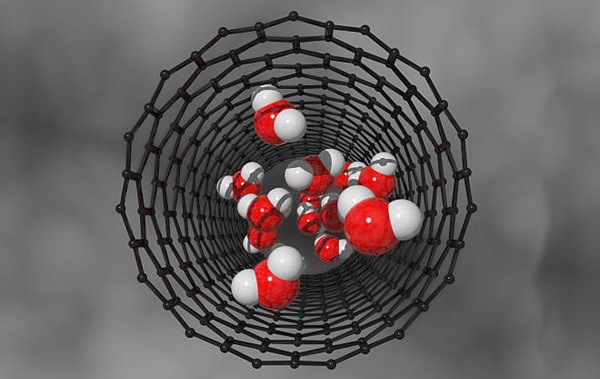Integrated Learning Models for Micro-Teaching Course
Downloads
Doi:10.28991/ESJ-2024-08-06-020
Full Text:PDF
Downloads
Wang, J. (2021). The influence of micro-teaching on teaching abilities of students majoring in physical education in physical schools. E3S Web of Conferences, 251, 3077. doi:10.1051/e3sconf/202125103077.
O'Flaherty, J., Lenihan, R., Young, A. M., & McCormack, O. (2024). Developing micro-teaching with a focus on core practices: The use of approximations of practice. Education Sciences, 14(1), 35. doi:10.3390/educsci14010035.
Cerruto, A., Moroney, R., Ngugi, N., Watts, K., Whelan, J., Portnoy, C., Lotito, S., Singh, S., Barbour, F., & Bucco, A. (2023). Microteaching lesson study: Its impact on the development of self-efficacy with teachers-in-training in a community-based outreach program. Creative Education, 14(6), 1153–1168. doi:10.4236/ce.2023.146073.
Malki, M. A. Al, Foori, R. Al, & Abri, K. Al. (2023). Pre-service teachers' critical self-reflection in microteaching context at university of technology and applied sciencies – Rustaq, Oman. Journal of Teaching English for Specific and Academic Purposes, 11(2), 539–554. doi:10.22190/JTESAP230505045A.
İlhan, A., Poçan, S., & Aslaner, R. (2023). Microteaching and peer assessment in mathematics teaching practice. Brock Education Journal, 32(2), 29–57. doi:10.26522/brocked.v32i2.992.
Blegur, J., Ma'mun, A., Mahendra, A., Mahardika, I. M. S., & Tlonaen, Z. A. (2023). Bibliometric analysis of micro-teaching model research trends in 2013-2023. Journal of Innovation in Educational and Cultural Research, 4(3), 523–533. doi:10.46843/jiecr.v4i3.782.
Mulyatun, S. (2014). Analysis of basic teaching skills of prospective chemistry teacher students (study on field experience practice of chemistry education students). Phenomenon: Jurnal Pendidikan MIPA, 4(1), 79–90. doi:10.21580/phen.2014.4.1.112.
Muntaner-Mas, A., Vidal-Conti, J., Sesé, A., & Palou, P. (2017). Teaching skills, students' emotions, perceived control and academic achievement in university students: A SEM approach. Teaching and Teacher Education, 67, 1–8. doi:10.1016/j.tate.2017.05.013.
Asarzadeh, E., Yazdekhasti, A., & Madani, S. A. (2020). Investigating the relationship between teaching skills of teachers and students motivational beliefs in secondary school. Journal of Management and Accounting Studies, 8(1), 15–19. doi:10.24200/jmas.vol8iss1pp15-19.
Charanjit Kaur Dhillon. (2014). Identifying essential teaching skills. Scholarly Research Journals, 2(13), 1613–1620.
Osborne, R., Belmont, R. S., Peixoto, R. P., De Azevedo, I. O. S., & De Carvalho, A. F. P. (2016). Obstacles for physical education teachers in public schools: An unsustainable situation. Motriz: Revista de Educacao Fisica, 22(4), 310–318. doi:10.1590/S1980-6574201600040015.
Veloo, A., & Md-Ali, R. (2016). Physical education teachers challenges in implementing school based assessment. International Review of Management and Marketing, 6(8Special Issue), 48–53.
Pantovič, M., Pavlovic, R., & Joksimovič, M. (2018). Problems of teaching of physical education: Why students (don't) like physical education classes? Slovak Journal of Sport Science, 3(1), 1–20.
Ahmad Oudat, M. (2016). Challenges facing physical education teachers in Jordan from perspective of the teachers themselves. Advances in Physical Education, 6(2), 43–51. doi:10.4236/ape.2016.62005.
Prajapati, S. K., Yadav, T. S., Kumari, P., & Németh, Z. (2023). Challenges physical education teachers face in schools across India. European Journal of Physical Education and Sport Science, 10(2), 104–115. doi:10.46827/ejpe.v10i2.4979.
Quennerstedt, M. (2019). Physical education and the art of teaching: transformative learning and teaching in physical education and sports pedagogy. Sport, Education and Society, 24(6), 611–623. doi:10.1080/13573322.2019.1574731.
Zulaeha, I., & Luriawati, D. (2010). Development of innovative micro learning models for improving the pedagogical competence of prospective Indonesian language teachers. Lingua: Journal of Language and Literature, 6(2), 1–6. doi:10.15294/lingua.v6i2.873.
Kilic, A. (2010). Learner-centered micro teaching in teacher education. International Journal of Instruction, 3(1), 77–100.
Makassar, U. M., Nasar, A., Bili, M., Kaleka, U., Alung, H. V, Sam, J., & Flores, R. E. (2020). Applying the learner-centered micro teaching model for improving teaching confidence, attitudes toward teaching profession, and pedagogical content knowledge (PCK) of physics education students. Jurnal Pendidikan Fisika, 8(3), 235–248. doi:10.26618/jpf.v8i3.3607.
Nasar, A., & Kaleka, M. B. U. (2020). The effect of distance learning with learner center micro teaching model on student' teaching confidence and teaching skills. JIPF (Jurnal Ilmu Pendidikan Fisika), 5(3), 159. doi:10.26737/jipf.v5i3.1834.
Zhang, S., & Cheng, Q. (2011). Learning to teach through a practicum-based microteaching model. Action in Teacher Education, 33(4), 343–358. doi:10.1080/01626620.2011.620523.
Utami, I. W. P., Mashuri, & Nafi'ah, U. (2016). A model of microteaching lesson study implementation in the prospective history teacher education. Journal of Education and Practice, 7(27), 10–14.
Šžahin, Šž., & Kılıç, A. (2020). Evaluation of the teaching practice course carried out with the lesson study model. Tuning Journal for Higher Education, 8(1), 99–127. doi:10.18543/TJHE-8(1)-2020PP99-127.
Iksan, Z. H., Zakaria, E., & Daud, M. Y. (2014). Model of lesson study approach during micro teaching. International Education Studies, 7(13), 253–260. doi:10.5539/ies.v7n13p253.
Zhou, G., & Xu, J. (2017). Microteaching lesson study: An approach to prepare teacher candidates to teach science through inquiry. International Journal of Education in Mathematics, Science and Technology, 5(3), 235–235. doi:10.18404/ijemst.296039.
Arifmiboy, Jamna, J., Iswari, M., & Agustina. (2018). Tadaluring microteaching learning model (TMLM): Preparing professional teacher by pre-service training. SHS Web of Conferences, 42, 00007. doi:10.1051/shsconf/20184200007.
Supiyanto, Y., Sulistyaningrum, H., & Astuty, H. S. (2021). Development of microteaching learning model based on experiential learning through role of models and groups. Vidya Karya, 36(1), 25–34. doi:10.20527/jvk.v36i1.10281.
Sudrajat, A., Darojat, O., Soleh, D. A., & Ningtyas, L. D. (2022). Development of micro teaching-learning model based on youtube channel in distance learning to improve students' basic teaching ability. TARBIYA: Journal of Education in Muslim Society, 9(1), 51–62. doi:10.15408/tjems.v9i1.25512.
Taruli, D., Anakampun, R., Samosir, T., Nababan, A., & Widiastuti, M. (2023). Development of microteaching guide book based on hybrid learning to improve teaching skills of prospective teachers. AL-ISHLAH: Jurnal Pendidikan, 15(3), 2725–2732. doi:10.35445/alishlah.v15i3.2919.
Shah, S. M. H., & Masrur, R. (2011). Impact of micro teaching skills on the performance of primary school teachers. Gomal University Journal of Research, 27(1), 15–29.
Blegur, J., & Lumba, A. J. F. (2019). Improving teaching skills of the prospective physical education teachers through drill guide method. Jurnal Pendidikan Jasmani dan Olahraga, 4(2), 178–188. doi:10.17509/jpjo.v4i2.19171.
Blegur, J., & Lumba, A. J. F. (2022). Teaching skills of the prospective physical education teachers based on group learning commitment. JPI (Jurnal Pendidikan Indonesia), 11(1), 107–116. doi:10.23887/jpi-undiksha.v11i1.34739.
Arnold, R. D., & Wade, J. P. (2015). A definition of systems thinking: A systems approach. Procedia Computer Science, 44, 669–678. doi:10.1016/j.procs.2015.03.050.
Muniri, M., & Choirudin, C. (2022). The flow of analytical thinking high cognitive level students in mathematics problem solving. AL-ISHLAH: Jurnal Pendidikan, 14(4), 6147–6158. doi:10.35445/alishlah.v14i4.2413.
Perdana, R., Jumadi, J., & Rosana, D. (2019). Relationship between analytical thinking skill and scientific argumentation using PBL with interactive CK 12 simulation. International Journal on Social and Education Sciences, 1(1), 16–23.
Fishman, T. (2014). The fundamental values of academic integrity. International Center for Academic Integrity, Clemson University, South Carolina, United States.
Davis, A. (2023). Academic integrity in the time of contradictions. Cogent Education, 10(2), 2289307. doi:10.1080/2331186X.2023.2289307.
Blegur, J., Subarjah, H., Hidayat, Y., Ma'mun, A., Mahendra, A., Mahardika, I. M. S., & Hardiansyah, S. (2024). Peer-assessment academic integrity scale (PAAIS-24). Emerging Science Journal, 8(2), 513–526. doi:10.28991/ESJ-2024-08-02-09.
Jovanovic, D., & Ciric, M. (2016). Benefits of transformational leadership in the context of education. The European Proceedings of Social & Behavioural Science, Cognitive-Crcs, 496–503. doi:10.15405/epsbs.2016.09.64.
York-Barr, J., & Duke, K. (2004). What do we know about teacher leadership? Findings from two decades of scholarship. Review of Educational Research, 74(3), 255–316. doi:10.3102/00346543074003255.
Branch, R. M. (2010). Instructional design: The ADDIE approach. Springer, New York, United States. doi:10.1007/978-0-387-09506-6.
Lester, J. N., Cho, Y., & Lochmiller, C. R. (2020). Learning to do qualitative data analysis: A starting point. Human Resource Development Review, 19(1), 94–106. doi:10.1177/1534484320903890.
Blegur, J., Ma'mun, A., Berliana, Mahendra, A., & Layao, M. M. (2024). Need analysis for innovation in integrated learning models for micro-teaching course: Explanatory sequential design. Jurnal Keolahragaan, 12(1), 50–66. doi:10.21831/jk.v12i1.71950.
Scholtz, S. E. (2021). Sacrifice is a step beyond convenience: A review of convenience sampling in psychological research in Africa. SA Journal of Industrial Psychology, 47(0), 1837. doi:10.4102/sajip.v47i0.1837.
Aiken, L. R. (1985). Three coefficients for analyzing the reliability and validity of ratings. Educational and Psychological Measurement, 45(1), 131–142. doi:10.1177/0013164485451012.
Koo, T. K., & Li, M. Y. (2016). A guideline of selecting and reporting intraclass correlation coefficients for reliability research. Journal of Chiropractic Medicine, 15(2), 155–163. doi:10.1016/j.jcm.2016.02.012.
Hair Jr, J., Page, M., & Brunsveld, N. (2019). Essentials of business research methods. Routledge, London, United Kingdom. doi:10.4324/9780429203374.
Hair Jr, J. F., Black, W. C., Babin, B. J., Anderson, R. E., Black, W. C., & Anderson, R. E. (2019). Multivariate data analysis. Cengage Learning, London, United Kingdom.
Hulland, J. (1999). Use of partial least squares (PLS) in strategic management research: A review of four recent studies. Strategic Management Journal, 20(2), 195–204. doi:10.1002/(sici)1097-0266(199902)20:2<195::aid-smj13>3.0.co;2-7.
Kay Kwong, K. W. (2013). Partial least square structural equation modeling (PLS-SEM) techniques using SmartPLS. Marketing Bulletin, 24(1), 1–32.
Henseler, J., Hubona, G., & Ray, P. A. (2016). Using PLS path modeling in new technology research: Updated guidelines. Industrial Management and Data Systems, 116(1), 2–20. doi:10.1108/IMDS-09-2015-0382.
Fornell, C., & Larcker, D. F. (1981). Evaluating structural equation models with unobservable variables and measurement error. Journal of Marketing Research, 18(1), 39–50. doi:10.1177/002224378101800104.
Akinyode, B. F. (2016). The use of structural equation modeling (SEM) in built environment disciplines. International Institute for Science, Technology and Education (IISTE), 6(6), 2225–0484.
Dash, G., & Paul, J. (2021). CB-SEM vs PLS-SEM methods for research in social sciences and technology forecasting. Technological Forecasting and Social Change, 173, 121092. doi:10.1016/j.techfore.2021.121092.
Hair, J.F., Hult, G.T.M., Ringle, C.M., Sarstedt, M., Danks, N.P., Ray, S. (2021). An Introduction to structural equation modeling. In: partial least squares structural equation modeling (PLS-SEM) using R. Classroom Companion: Business. Springer, Cham, Switzerland. doi:10.1007/978-3-030-80519-7_1.
Ryu, E. (2014). Model fit evaluation in multilevel structural equation models. Frontiers in Psychology, 5, 1–9. doi:10.3389/fpsyg.2014.00081.
Blegur, J., P. Wasak, M. R., & Manu, L. (2017). Formative assessment of students on educator competence in the learning process. Satya Widya, 33(2), 117–127. doi:10.24246/j.sw.2017.v33.i2.p117-127.
Blegur, J., Haq, A. H. B., & Barida, M. (2021). Exploring goal–setting strategies of prospective physical education teachers to maintain academic performance. AL-ISHLAH: Jurnal Pendidikan, 13(1), 473–484. doi:10.35445/alishlah.v13i1.539.
Abe, I. I., Ilogu, G. C., & Madueke, I. L. (2014). Effects of goal-setting skills on students' academic performance in English language in Enugu Nigeria. Journal of New Approaches in Educational Research, 3(2), 93–99. doi:10.7821/naer.3.2.93-99.
Clark, D., Gill, D., Prowse, V., & Rush, M. (2020). Using goals to motivate college students: Theory and evidence from field experiments. Review of Economics and Statistics, 102(4), 648–663. doi:10.1162/rest_a_00864.
Blegur, J., Haq, A. H. B., & Barida, M. (2023). Assertiveness as a new strategy for physical education students to maintain academic performance. Qualitative Report, 28(3), 865–885. doi:10.46743/2160-3715/2023.5659.
Latham, G. P., & Locke, E. A. (1991). Self-regulation through goal setting. Organizational Behavior and Human Decision Processes, 50(2), 212-247. doi:10.1016/0749-5978(91)90021-K.
Legault, L. (2017). Self-determination theory. In: Zeigler-Hill, V., Shackelford, T. (eds) Encyclopedia of personality and individual differences. Springer, Cham, Switzerland. doi:10.1007/978-3-319-28099-8_1162-1.
Ryan, R. M., & Deci, E. L. (2020). Intrinsic and extrinsic motivation from a self-determination theory perspective: Definitions, theory, practices, and future directions. Contemporary Educational Psychology, 61, 101860. doi:10.1016/j.cedpsych.2020.101860.
Orr, R. B., Csikari, M. M., Freeman, S., & Rodriguez, M. C. (2022). Writing and using learning objectives. CBE Life Sciences Education, 21(3), 1–6. doi:10.1187/cbe.22-04-0073.
Harris, R., & Clayton, B. (2019). The current emphasis on learning outcomes. International Journal of Training Research, 17(2), 93–97. doi:10.1080/14480220.2019.1644777.
Mahajan, M., & Singh, M. K. S. (2017). Importance and benefits of learning outcomes. IOSR Journal of Humanities and Social Science, 22(03), 65–67. doi:10.9790/0837-2203056567.
Osueke, B., Mekonnen, B., & Stanton, J. D. (2018). How undergraduate science students use learning objectives to study. Journal of Microbiology & Biology Education, 19(2), 69. doi:10.1128/jmbe.v19i2.1510.
Mitchell, K. M. W., & Manzo, W. R. (2018). The purpose and perception of learning objectives. Journal of Political Science Education, 14(4), 456–472. doi:10.1080/15512169.2018.1433542.
Laal, M., & Ghodsi, S. M. (2012). Benefits of collaborative learning. Procedia - Social and Behavioral Sciences, 31, 486–490. doi:10.1016/j.sbspro.2011.12.091.
Gautam, N. (2018). Importance of group learning and its approaches in teacher education. Journal of Emerging Technologies and Innovative Research, 5(4), 823–829.
Van Wyk, J., & Haffejee, F. (2017). Benefits of group learning as a collaborative strategy in a diverse higher education context. International Journal of Educational Sciences, 18(1–3), 158–163. doi:10.1080/09751122.2017.1305745.
Badyal, D. K. (2023). Small-group and team-building process in teaching–learning of pharmacology. National Journal of Pharmacology and Therapeutics, 1(3), 117–122. doi:10.4103/njpt.njpt_47_23.
Costley, J. (2021). How role-taking in a group-work setting affects the relationship between the amount of collaboration and germane cognitive load. International Journal of Educational Technology in Higher Education, 18(1), 24. doi:10.1186/s41239-021-00259-w.
Rink, J. (2013). Teaching physical education for learning (7th Ed.). McGraw-Hill, New York, United States.
Mané, A. M., Adams, J. A., & Donchin, E. (1989). Adaptive and part-whole training in the acquisition of a complex perceptual-motor skill. Acta Psychologica, 71(1–3), 179–196. doi:10.1016/0001-6918(89)90008-5.
Swanson, R. A., & Law, B. D. (1993). Whole"part"whole learning model. Performance Improvement Quarterly, 6(1), 43–53. doi:10.1111/j.1937-8327.1993.tb00572.x.
Mahasuran, A., & Anbalagan, P. (2022). Impact of method of teaching on selected physical fitness components of handball among school boys. International Journal of Research and Development, 7(11), 20–25, doi:10.36713/epra2016.
Barling, J., Weber, T., & Kelloway, E. K. (1996). Effects of transformational leadership training on attitudinal and financial outcomes: A field experiment. Journal of Applied Psychology, 81(6), 827–832. doi:10.1037/0021-9010.81.6.827.
Hamdani, M. R. (2018). Learning how to be a transformational leader through a skill-building, role-play exercise. International Journal of Management Education, 16(1), 26–36. doi:10.1016/j.ijme.2017.11.003.
Cohrs, C., Bormann, K. C., Diebig, M., Millhoff, C., Pachocki, K., & Rowold, J. (2020). Transformational leadership and communication: Evaluation of a two-day leadership development program. Leadership and Organization Development Journal, 41(1), 101–117. doi:10.1108/LODJ-02-2019-0097.
Bass, B. M. (1985). Leadership and performance beyond expectations. Free Press, New York, United States.
Podsakoff, P. M., MacKenzie, S. B., Moorman, R. H., & Fetter, R. (1990). Transformational leader behaviors and their effects on followers' trust in leader, satisfaction, and organizational citizenship behaviors. The Leadership Quarterly, 1(2), 107–142. doi:10.1016/1048-9843(90)90009-7.
Carless, S. A., Wearing, A. J., & Mann, L. (2000). A short measure of transformational leadership. Journal of Business and Psychology, 14(3), 389–405. doi:10.1023/A:1022991115523.
Guerrero-Dib, J. G., Portales, L., & Heredia-Escorza, Y. (2020). Impact of academic integrity on workplace ethical behaviour. International Journal for Educational Integrity, 16(1), 2. doi:10.1007/s40979-020-0051-3.
Stone, A. (2023). Student perceptions of academic integrity: A qualitative study of understanding, consequences, and impact. Journal of Academic Ethics, 21(3), 357–375. doi:10.1007/s10805-022-09461-5.
Winardi, R. D., Mustikarini, A., & Anggraeni, M. A. (2017). Academic dishonesty among accounting students: Some Indonesian evidence. Jurnal Akuntansi dan Keuangan Indonesia, 14(2), 142–164. doi:10.21002/jaki.2017.08.
Zhao, L., Mao, H., Compton, B. J., Peng, J., Fu, G., Fang, F., Heyman, G. D., & Lee, K. (2022). Academic dishonesty and its relations to peer cheating and culture: A meta-analysis of the perceived peer cheating effect. Educational Research Review, 36, 100455. doi:10.1016/j.edurev.2022.100455.
Bayaa Martin Saana, S. B., Ablordeppey, E., Mensah, N. J., & Karikari, T. K. (2016). Academic dishonesty in higher education: Students' perceptions and involvement in an African institution. BMC Research Notes, 9(1), 234. doi:10.1186/s13104-016-2044-0.
Grieve, R., Woodley, J., Hunt, S. E., & McKay, A. (2021). Student fears of oral presentations and public speaking in higher education: A qualitative survey. Journal of Further and Higher Education, 45(9), 1281–1293. doi:10.1080/0309877X.2021.1948509.
Chiang, Y. C., Lee, H. C., Chu, T. L., Wu, C. L., & Hsiao, Y. C. (2022). Development and validation of the oral presentation evaluation scale (OPES) for nursing students. BMC Medical Education, 22(1), 318. doi:10.1186/s12909-022-03376-w.
Aziz, A. I., Nazihah, W., Mohamed, W., Hairunnisa, N., & Nor, M. (2022). Oral presentations difficulties and its causes: Preliminary analysis of UiTM Kelantan students. ESTEEM: Journal of Social Sciences and Humanities, 6(2), 45–55.
Živkovič, S. (2014). The importance of oral presentations for university students. Mediterranean Journal of Social Sciences, 5(19), 468–475. doi:10.5901/mjss.2014.v5n19p468.
Tsang, A. (2020). Enhancing learners' awareness of oral presentation (delivery) skills in the context of self-regulated learning. Active Learning in Higher Education, 21(1), 39–50. doi:10.1177/1469787417731214.
Mardiningrum, A., & Ramadhani, D. R. (2022). Classroom oral presentation: Students' challenges and how they cope. Eralingua: Jurnal Pendidikan Bahasa Asing dan Sastra, 6(1), 103. doi:10.26858/eralingua.v6i1.28487.
Anderson, L. W., & Krathwohl, D. R. (2001). A taxonomy for learning, teaching, and assessing: A revision of Bloom's taxonomy of educational objectives. Addison Wesley Longman, Boston, United States.
Blegur, J., Rajagukguk, C. P. M., Sjioen, A. E., & Souisa, M. (2023). Innovation of analytical thinking skills instrument for throwing and catching game activities for elementary school students. International Journal of Instruction, 16(1), 723–740. doi:10.29333/iji.2023.16140a.
Blegur, J., Mahendra, A., Mahardika, I. M. S., Lumba, A. J. F., & Rajagukguk, C. P. M. (2023). Construction of analytical thinking skills instruments for micro teaching courses. Journal of Education Research and Evaluation, 7(2), 184–196. doi:10.23887/jere.v7i2.57025.
Qomariya, Y., Muharrami, L. K., Hadi, W. P., & Rosidi, I. (2018). Profile of analytical thinking skills of students of SMP Negeri 3 Bangkalan using the pictorial riddle method in guided inquiry learning. Natural Science Education Research, 1(1), 9–18. doi:10.21107/nser.v1i1.4172.
BeŠˆo, P., Havan, P., & Š prinková, S. (2020). Structured, analytical and critical thinking in the educational process of future teachers. Acta Educationis Generalis, 10(3), 111–118. doi:10.2478/atd-2020-0024.
Phurikultong, N., & Kantathanawat, T. (2022). Flipping the undergraduate classroom to develop student analytical thinking skills. Emerging Science Journal, 6(4), 739–757. doi:10.28991/ESJ-2022-06-04-06.
Ramadani, A. S., Supardi, Z. A. I., Tukiran, & Hariyono, E. (2021). Profile of analytical thinking skills through inquiry-based learning in science subjects. Studies in Learning and Teaching 2(3), 45–60. doi:10.46627/silet.v2i3.83.
Rengganis, A. P., & Yulianto, A. (2018). Analysis of students' analytical thinking skill in electromagnetic induction concept using mini tesla coil. Physics Communication, 2(2), 130–140. doi:10.15294/physcomm.v2i2.14966.
Kesorn, N., Junpeng, P., Marwiang, M., Pongboriboon, K., Tang, K. N., Bathia, S., & Wilson, M. (2020). Development of an assessment tool for mathematical reading, analytical thinking and mathematical writing. International Journal of Evaluation and Research in Education, 9(4), 955–962. doi:10.11591/ijere.v9i4.20505.
Siebert, J., & Kunz, R. (2016). Developing and validating the multidimensional proactive decision-making scale. European Journal of Operational Research, 249(3), 864–877. doi:10.1016/j.ejor.2015.06.066.
Shishigu, A., Hailu, A., & Anibo, Z. (2018). Problem-based learning and conceptual understanding of college female students in physics. Eurasia Journal of Mathematics, Science and Technology Education, 14(1), 145–154. doi:10.12973/ejmste/78035.
Ansari, M. T., Rahman, S. A., Badgujar, V. B., Sami, F., & Abdullah, M. S. (2015). Problem based learning (PBL): A novel and effective tool of teaching and learning. Indian Journal of Pharmaceutical Education and Research, 49(4), 258–265. doi:10.5530/ijper.49.4.3.
Nasution, M. L., Yerizon, Y., & Gusmiyanti, R. (2018). Students' mathematical problem-solving abilities through the application of learning models problem based learning. IOP Conference Series: Materials Science and Engineering 335, 12117. doi:10.1088/1757-899X/335/1/012117.
Puspita, A. D., Maryani, I., & Sukma, H. H. (2023). Problem-based science learning in elementary schools: A bibliometric analysis. Journal of Education and Learning, 17(2), 285–293. doi:10.11591/edulearn.v17i2.20856.
Kek, M. Y. C. A., & Huijser, H. (2011). The power of problem-based learning in developing critical thinking skills: Preparing students for tomorrow's digital futures in today's classrooms. Higher Education Research and Development, 30(3), 329–341. doi:10.1080/07294360.2010.501074.
Simonton, K. L., Layne, T. E., & Irwin, C. C. (2021). Project-based learning and its potential in physical education: An instructional model inquiry. Curriculum Studies in Health and Physical Education, 12(1), 36–52. doi:10.1080/25742981.2020.1862683.
Chen, C. H., & Chiu, C. H. (2016). Employing intergroup competition in multitouch design-based learning to foster student engagement, learning achievement, and creativity. Computers and Education, 103, 99–113. doi:10.1016/j.compedu.2016.09.007.
DiMenichi, B. C., & Tricomi, E. (2015). The power of competition: Effects of social motivation on attention, sustained physical effort, and learning. Frontiers in Psychology, 6, 1282. doi:10.3389/fpsyg.2015.01282.
Culajara, C. J. (2023). Improving learning performance in physical education through video-based presentations (VBP) approach. Physical Education and Sports: Studies and Research, 2(2), 100–115. doi:10.56003/pessr.v2i2.251.
Chen, Z. (2023). The influence of school's reward systems on students' development. Journal of Education, Humanities and Social Sciences, 8, 1822–1827. doi:10.54097/ehss.v8i.4591.
Davis, K. D., Winsler, A., & Middleton, M. (2006). Students' perceptions of rewards for academic performance by parents and teachers: Relations with achievement and motivation in college. Journal of Genetic Psychology, 167(2), 211–220. doi:10.3200/GNTP.167.2.211-220.
Dannan, A. (2020). The effect of a simple reward model on the academic achievement of Syrian dental students. International Journal of Educational Research Review, 5(4), 308–314. doi:10.24331/ijere.750108.
Porru, F., Robroek, S. J. W., Bültmann, U., Portoghese, I., Campagna, M., & Burdorf, A. (2021). Mental health among university students: The associations of effort-reward imbalance and overcommitment with psychological distress. Journal of Affective Disorders, 282, 953–961. doi:10.1016/j.jad.2020.12.183.
- This work (including HTML and PDF Files) is licensed under a Creative Commons Attribution 4.0 International License.



















